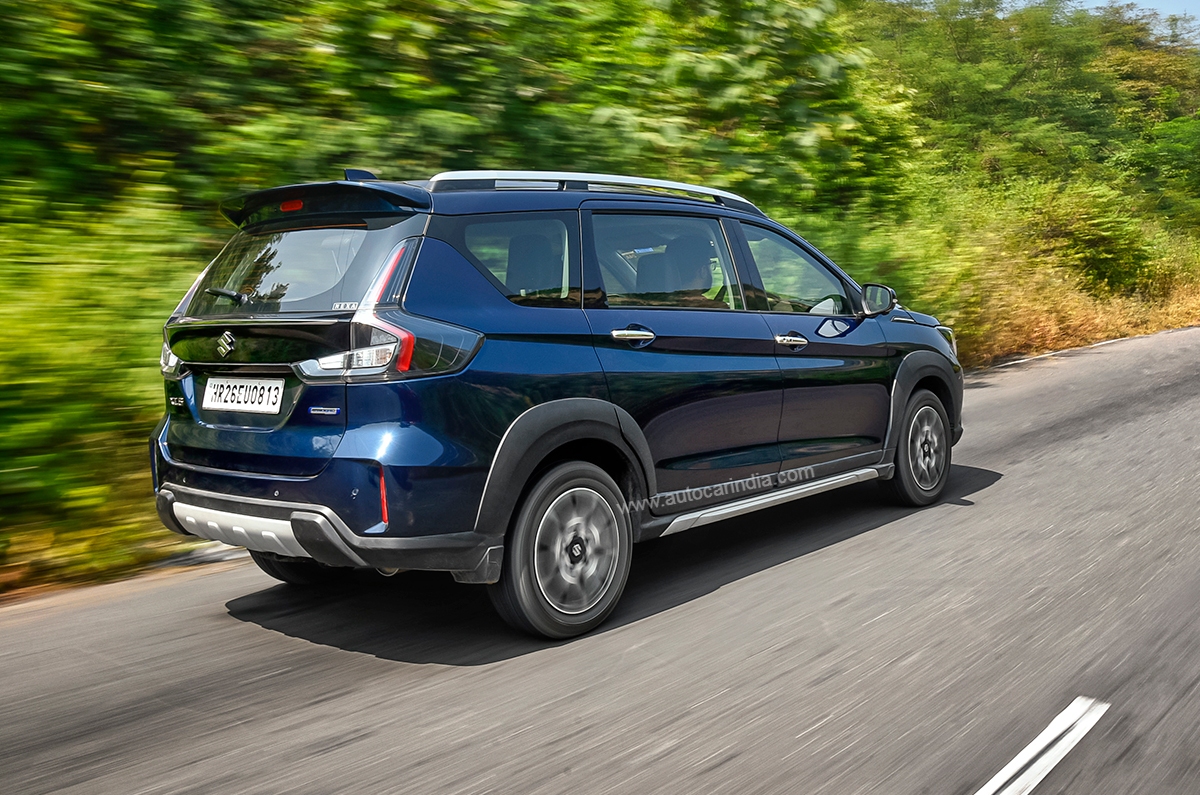
The Maruti Suzuki XL6 is a premium alternative to the popular Ertiga. In its latest avatar, this 6-seater MPV is powered by an all-new 1.5-litre K15C DualJet petrol engine that produces 103hp and 137Nm of torque, and gets a new 6-speed automatic transmission. We put it to the test to find out its real-world fuel efficiency.
- Auto engine stop-start checks fuel consumption while idling
- Sharp throttle responses hamper city fuel efficiency
In our standard tests, the Maruti XL6 petrol automatic delivered 9.20kpl in the city and a whopping 17.01kpl on the highway. These figures are a significant improvement over the pre-BS6 1.5-litre K15B petrol-automatic, which returned merely 7kpl and 15kpl in the city and on the highway, respectively.

What is the real world efficiency of the Maruti Suzuki XL6?
Maruti’s new K15C engine incorporates mild-hybrid technology, which includes automatic engine stop-start, brake energy recuperation and torque assist. It also gets dual injectors, dual variable valve timing and a higher compression ratio, all in the interest of improving fuel efficiency. As a result, city fuel efficiency has gone up by a significant 2.01kpl over the previous iteration; however, the XL6’s sharp throttle responses, which make it feel very peppy in the urban environment, remain one of the key reasons for its single-digit mileage figure.
Out on the open road, the story is different and the new 6-speed torque converter, which replaces the 4-speeder, gives the XL6 longer legs to cruise, reducing fuel consumption. For reference, at 100kph, the XL6’s engine spins at 2,100rpm in sixth gear, whereas the older 4-speeder cruised at 2,700rpm in top gear.
Autocar India’s fuel efficiency testing
Before our real-world fuel efficiency test, we fill the tanks of our test cars to the brim and maintain tyre pressures based on the manufacturer’s recommendation. These cars are driven in fixed city and highway loops, and we maintain certain average speeds. Throughout our test, there is only one person in each car, running the air con and other electricals like the audio system, indicators and wipers when required, just like how regular users would. Periodic driver swaps further neutralise variations in driver patterns. At the end of each cycle, we calculate efficiency by filling them up to the brim again.
Also read:
2019 Maruti Suzuki Ertiga review, road test
2022 Maruti Suzuki XL6 review: Upping the ante
Hyundai Creta 1.5-litre petrol CVT real world fuel economy tested, explained
from Autocar Indiahttps://cdni.autocarindia.com/ExtraImages/20221114024542__AAB2710.jpg



